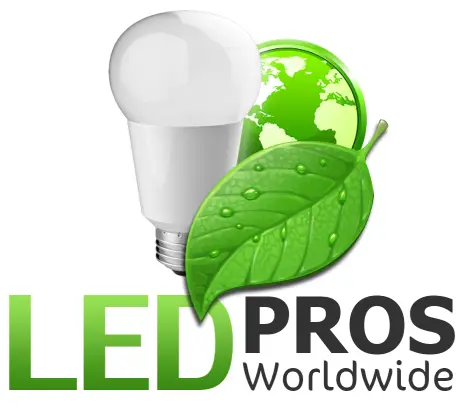Lighting plays a vital role in commercial and industrial settings, impacting everything from worker safety and productivity to energy efficiency and overall ambiance. When it’s time to purchase new industrial light fixtures or upgrade existing ones, the process involves more than a quick trip to the hardware store. To make the best decision for your business, you must carefully consider various aspects of commercial industrial lighting. In this guide, we’ll explore the key factors to keep in mind before making your lighting purchase.
Understanding Different Types of Industrial Light Fixtures
One of the first steps in selecting commercial industrial lighting is familiarizing yourself with the various fixture types available. Some common options include:
1. High bay lights: Ideal for spaces with high ceilings like warehouses and factories
2. Low bay lights: Suitable for areas with lower ceilings such as retail stores and workshops
3. Linear fixtures: Versatile option for general lighting in offices, hallways, and more
4. Flood lights: Perfect for illuminating outdoor areas like parking lots and loading docks
Understanding the strengths and applications of each fixture type will help you narrow down your choices based on your specific needs.
The Benefits of LED Industrial Lighting
In recent years, LED technology has revolutionized the lighting industry, and for good reason. Compared to traditional lighting sources, LED industrial light fixtures offer numerous advantages:
– Energy efficiency: LEDs consume significantly less power, leading to lower energy bills
– Long lifespan: With proper maintenance, LEDs can last for years, reducing replacement costs
– Improved safety: LEDs emit minimal heat and contain no harmful substances like mercury
– Instant illumination: Unlike some other lighting types, LEDs reach full brightness immediately
Given these benefits, investing in LED warehouse lighting or other commercial applications is a smart choice for most businesses.
Factors Influencing the Cost of Industrial Lighting
Of course, budget is always a consideration when making business purchases. Several factors can impact the cost of your industrial lighting:
– Fixture type and size
– Number of fixtures needed
– Installation requirements
– Energy efficiency and estimated savings over time
While it may be tempting to opt for the cheapest option upfront, remember to consider long-term costs as well. Investing in high-quality, energy-efficient fixtures can lead to significant savings down the line. Read more about Expert Tips for Commercial Industrial Lighting Selection here.
Ensuring Proper Lighting Levels and Distribution
Adequate lighting is essential for creating a safe and productive work environment. When choosing industrial light fixtures, consider the following:
– Recommended lighting levels for your specific application (measured in foot-candles or lux)
– Uniformity of light distribution to minimize glare and shadows
– Color rendering index (CRI) for tasks requiring accurate color perception
Working with a lighting professional can help ensure your lighting design meets all necessary requirements.
Finding a Trusted Industrial Lighting Supplier
With so many options on the market, it’s crucial to find a reputable supplier for your commercial industrial lighting needs. Look for a provider that offers:
– High-quality, energy-efficient fixtures from trusted manufacturers
– Wide selection of fixture types and sizes to suit your application
– Knowledgeable staff to provide guidance and support
– Competitive pricing and financing options
By partnering with a reliable supplier, you can feel confident in your lighting purchase and enjoy a smoother overall experience. Read more about Shedding Light on Modern Industrial Illumination here.
 |
FAQs About Commercial Industrial Lighting
1. What is industrial lighting?
Industrial lighting refers to lighting systems designed for use in commercial and industrial settings such as warehouses, factories, and large retail spaces.
2. How do I determine the right amount of lighting for my space?
Lighting requirements vary based on factors like room size, ceiling height, and task type. Consulting with a lighting professional can help ensure your space is properly illuminated.
3. Are LED industrial light fixtures worth the investment?
While LED fixtures may have a higher upfront cost, their energy efficiency, long lifespan, and reduced maintenance needs often make them a cost-effective choice in the long run.
Lighting Level Recommendations for Various Industries
When it comes to determining the appropriate lighting levels for your commercial or industrial space, it’s important to consider the specific needs of your industry. Proper illumination not only enhances safety and productivity but also ensures compliance with relevant standards and regulations. Let’s explore some general lighting level recommendations for a few common industries.
Warehouses and Distribution Centers
In warehouses and distribution centers, adequate lighting is crucial for efficient operations and worker safety. The Illuminating Engineering Society (IES) recommends the following lighting levels:
– General storage areas: 10-20 foot-candles (fc)
– Active storage areas: 20-50 fc
– Packing and shipping areas: 30-75 fc
– Loading docks: 20-50 fc
Keep in mind that these are minimum recommendations, and specific tasks may require higher lighting levels. For example, if workers need to read small labels or perform detailed inspections, you may need to provide localized lighting with higher foot-candle levels.
Manufacturing and Assembly Plants
Manufacturing and assembly plants often involve a wide range of tasks, each with its own lighting requirements. Here are some general guidelines:
– Assembly areas: 30-50 fc
– Inspection areas: 50-100 fc
– Machining and equipment areas: 30-75 fc
– Painting and finishing areas: 50-100 fc
In addition to these general levels, it’s important to consider the specific needs of each task. For instance, intricate assembly work may require higher lighting levels and specialized task lighting to reduce eye strain and improve precision.
Retail Stores and Showrooms
In retail environments, lighting plays a crucial role in creating an inviting atmosphere and showcasing products. The IES provides the following recommendations:
– General sales areas: 20-50 fc
– Checkout and service areas: 50-100 fc
– Dressing rooms: 20-50 fc
– Display windows: 100-500 fc
Retail lighting design should also take into account factors like color rendering, glare control, and energy efficiency. By using a combination of ambient, task, and accent lighting, you can create a visually appealing and comfortable environment that encourages sales.
Offices and Administrative Areas
Proper lighting in offices and administrative areas is essential for worker comfort, productivity, and well-being. The IES suggests the following lighting levels:
– Open offices: 30-50 fc
– Private offices: 30-50 fc
– Meeting rooms: 30-50 fc
– Corridors and stairways: 5-10 fc
In addition to these general levels, it’s important to consider factors like glare reduction, color temperature, and the use of natural light. Incorporating adjustable task lighting can also help workers customize their lighting to their individual needs and preferences.
When planning your industrial lighting design, always refer to the most current IES recommendations and any industry-specific standards or regulations. Working with a knowledgeable lighting professional can help ensure that your lighting meets all necessary requirements while creating a safe, comfortable, and visually appealing environment for your workforce.
In Essence
Purchasing commercial industrial lighting is a significant decision that requires careful consideration of various factors. By understanding the different types of fixtures available, the benefits of LED technology, and the importance of proper lighting levels and distribution, you’ll be well-equipped to make an informed choice. Remember to factor in both upfront and long-term costs, and don’t hesitate to consult with a trusted lighting supplier for guidance. With the right industrial light fixtures in place, you can create a safe, productive, and visually appealing environment for your business.
[gravityform id=”1″ title=”true” description=”true”]
